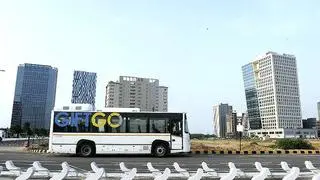Two policy measures announced by the Central government for the electric vehicle industry this week bring a case for more optimism as both are expected to help drive electrification in the vehicle segment.
The government’s PLI scheme, coupled with the latest schemes such as the Electric Mobility Promotion Scheme 2024 and the E-Vehicle policy are expected to not only drive adoption but also help develop a robust supply chain ecosystem for EV manufacturing.
A few days ago, the Centre announced The Electric Mobility Promotion Scheme 2024 with a subsidy outlay of ₹500 crore for a period of four months – from April 1, 2024 to July 31, 2024. This comes at a time when the industry was anxiously waiting for an extension of the subsidy scheme. Around two-thirds of the outlay is proposed to be earmarked for electric two-wheelers.
The continuation of the subsidy support for electric two and three-wheelers is expected to bolster the demand and accelerate the adoption of battery-powered vehicles.
“The government’s announcement to offer incentives under a new scheme for e-2Ws and e-3Ws will continue to provide a disruption-free environment for e-2W OEMs just before the FAME-II scheme was about to end,” said Shamsher Dewan, Senior Vice President and Group Head – Corporate Ratings, ICRA.
Although the reduction in the subsidy benefit is a short-term impediment and may impact demand to some extent, electric vehicle makers will continue to strive to offer competitive products by leveraging their cost structure through localisation of key components and value engineering capabilities.
“In addition, softening in battery cell prices (which accounts for almost 40 per cent of vehicle cost) will also help them offset the impact of lower subsidies to some extent,” he said.
However, the payback period could get elongated to 5.5 years vis-à-vis five years (under the FAME-II framework), in a scenario wherein the e-2W manufacturers were to completely pass on the subsidy reduction amount to the consumers in the form of price hikes. The penetration of e-2Ws is likely to be in the range of 6-8 per cent in the overall industry by FY2025 compared with about 5 per cent at present,” according to the estimates of ICRA.
Manufacturing destination
On Friday, the Central government approved an EV policy to promote India as a manufacturing destination for EVs and attract investments from global EV manufacturers.
Industry representatives and analysts said the EV policy move would help access global technologies, expand product range, and improve cost competitiveness, all of which would facilitate enhanced EV adoption.
“The policy not only aims to attract global EV majors to invest in India but also emphasises a significant domestic value addition (DVA) criteria, ensuring the creation of a robust supply-side ecosystem,” said Shradha Suri Marwah, President, Automotive Component Manufacturers Association of India.
Uday Narang, Founder and Chairman, Omega Seiki Mobility terms the provision for limited imports of EVs at reduced custom duty rates, incentivising companies to invest in local manufacturing, as a strategic move to balance domestic production with international competitiveness.
It is learnt that countries that have been front-runners in EV adoption have also developed a local vendor ecosystem. “The EV policy would aid in increasing EV components localisation in India, which is currently at 30-40 per cent,” said Dewan.








Comments
Comments have to be in English, and in full sentences. They cannot be abusive or personal. Please abide by our community guidelines for posting your comments.
We have migrated to a new commenting platform. If you are already a registered user of TheHindu Businessline and logged in, you may continue to engage with our articles. If you do not have an account please register and login to post comments. Users can access their older comments by logging into their accounts on Vuukle.